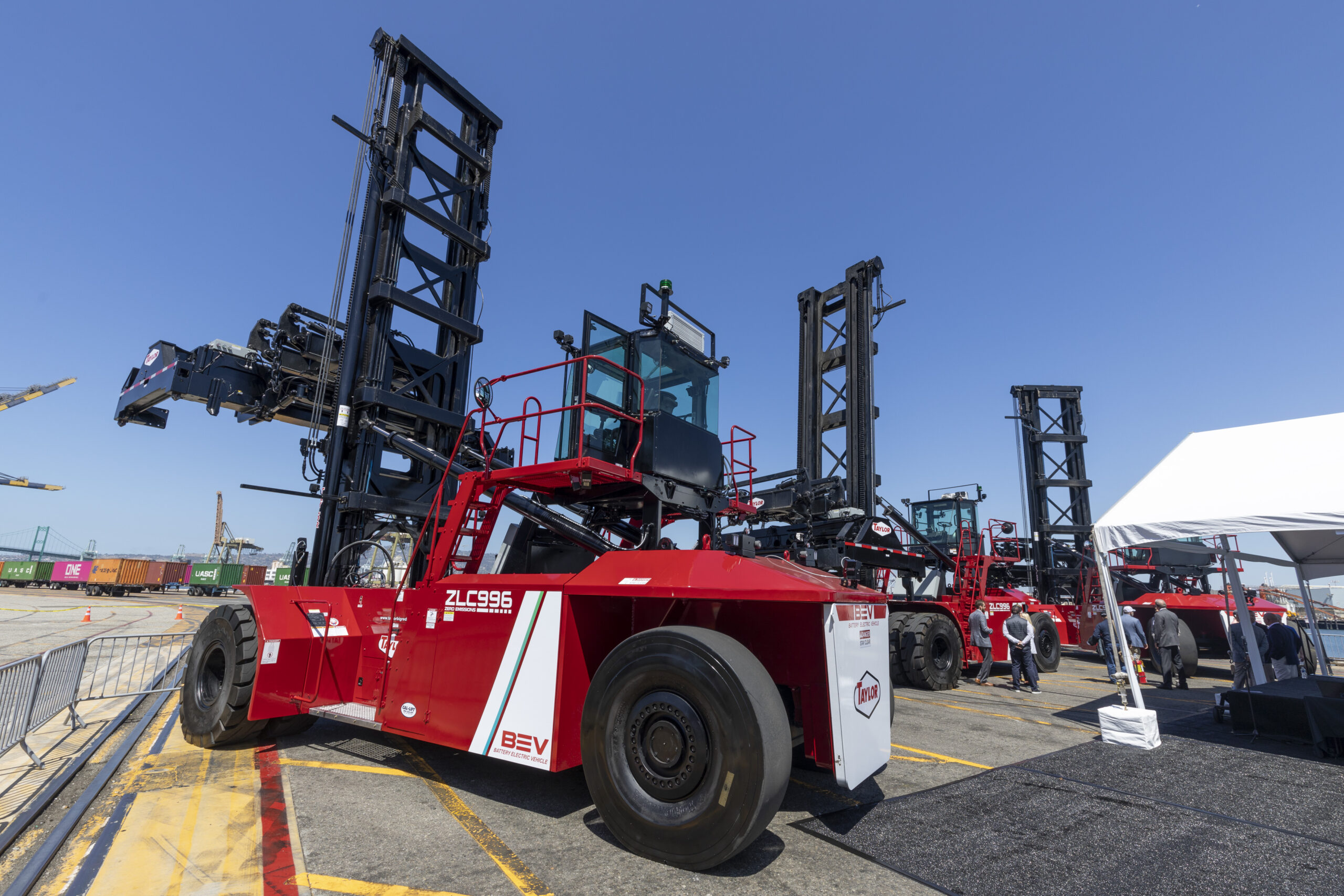
Electric Cargo Top Handlers Enter Service at Port of Los Angeles
Article via Maritime Logistics Professional
The Port of Los Angeles has deployed the first commercially available battery-powered electric cargo top handlers in the US. The five electric, human-operated top handlers purchased by Yusen Terminals will replace more polluting, diesel-powered equipment.
Typically diesel-powered, top handlers are off-road vehicles with an overhead boom for loading containers weighing up to 75,000 pounds onto trucks and trains, unloading them, and stacking them on terminals between pickups and deliveries.
The new Taylor ZLC 996 top handlers will be powered by a 650V all-electric battery power drivetrain, capable of running two-full shifts under normal work cycles, then ready-to-go after a five-hour boost using a180W recharger.
In 2019, the Port of Los Angeles was the first in the world to begin testing ZE top handler prototypes designed and built by Taylor Machine Works, a US-based heavy-duty equipment manufacturer already supplying top handlers in service at the Port.
There are currently 215 diesel top handlers used throughout the Port of Los Angeles, which account for about 30% of all emissions from cargo-handling equipment in operation at the Port’s terminals. Promoting the commercial use of ZE top handlers is one of many strategies underway at the Port to boost the market for new emission-free technologies.
Toward that goal, last month the Port applied to the US Environmental Protection Agency (EPA) for a $412 million grant to support deployment of 424 pieces of ZE cargo handling equipment, 250 ZE drayage trucks, and $50 million for community ZE initiatives. If awarded, the EPA million grant would be matched with an additional $233 million by the Port and several private sector partners, and result in reducing emissions of greenhouse gases by nearly 41,500 tons.
The Yusen Terminal electric top handler deployment is among a range of Port of Los Angeles programs designed to help meet its nation-leading sustainability goals, including the transition of all cargo handling equipment on its terminals to ZE by 2030, and all drayage trucks calling at the Port to ZE by 2035.
